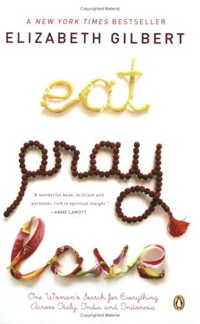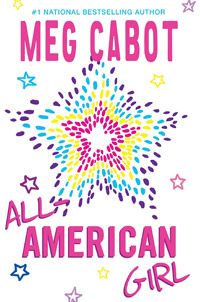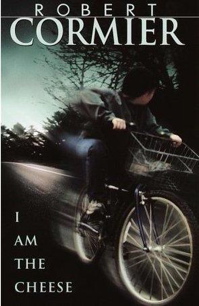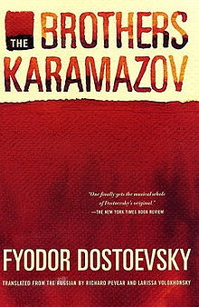Book reviews (Summer 2010)
 Eat, Pray, Love
Eat, Pray, Love
By Elizabeth Gilbert
Reviewed by Chantelle Moghadam
15, Viewpoint School (Calabasas)
Eat, Pray, Love by Elizabeth Gilbert inspired me. After reading it, I wanted to travel to different countries and have new experiences.
Gilbert’s memoir of trying to cope with the pain of her divorce was a bestseller a couple years ago, so I expected a lot when I cracked the spine. At first, I had trouble being patient with Gilbert’s slow writing style, which focused much more on her thoughts and feelings than the events in the book. But once I got used to her style, I enjoyed the story and let it take me to the places Gilbert traveled.
In the book, Gilbert embarks on a journey (both spiritual and physical) to Italy, India and Indonesia. The title, Eat, Pray, Love, comes from the idea that each place and person has one word that belongs to them or it, an idea that Gilbert acquired from a friend she met in Italy.
These three words: eat, pray and love belong to the three countries that Gilbert visits in the book. Gilbert stresses the importance of these ideas in each of the three countries. In India, which is represented by “pray,” Gilbert lives in an ashram, an Indian religious community, for four months and devotes herself completely to meditation and spirituality.
Whether Gilbert was trying to inspire her readers or just had a story to tell, I couldn’t say. But if inspiring was her goal, she was successful. After reading it, I started learning Italian, something that I had always wanted to do.
It was also easy for me to relate to Gilbert, because I have the same perpetual feeling of wanderlust that she has. Like her, I often find myself wanting to go somewhere far away when I am in a painful situation. I think what Gilbert is trying to say with Eat, Pray, Love is that sometimes it’s OK to do things for ourselves.
Though it may seem unlikely that a high school girl from Calabasas was able to relate to this story about a divorce and world travels, I really connected with Gilbert’s need to get away from her own world for a while when problems arise that are out of her control. I often feel this same need to leave when I am stressed at school or having problems with friends. Reading this book not only helped me to understand that that was not running away from problems, and in a way the book itself provided an escape.
 All-American Girl
All-American Girl
By Meg Cabot
line
Reviewed by Julia Waldow
15, Beverly Hills HS
All-American Girl by Meg Cabot is one of my favorite books. The characters seem real and the plot is full of exciting twists. Cabot has a way of getting into a teenager’s mind and putting her characters in situations that a lot of readers can relate to.
Samantha Madison lives in Washington, D.C. and is having a hard time at home and at school. Her two sisters are nothing like her (one’s popular and the other’s an annoying genius), and she’s in love with her older sister’s boyfriend, Jack. When Sam’s parents find out that she’s selling celebrity caricatures in school, they want her to take art classes as a creative outlet, but Sam feels that she is too experienced for the class.
One day Sam ditches art class and is standing on the sidewalk, waiting for the light to change, when she sees a man trying to shoot the President, who is across the street. Sam tackles the man, saving the President’s life and becoming a national hero and even teen ambassador to the United Nations! Sam becomes popular overnight and goes to a bunch of cool parties, but despite all of this, she still longs for a boyfriend. And who it turns out to be is quite surprising.
So much happens in this book. The story doesn’t end with Sam becoming famous—she has to make some difficult decisions that affect her relationships with others, and she has to learn how to be true to herself.
Sam is a great character because she is easy to relate to. She has problems with her siblings and her parents, she struggles with who she is and who she wants to be, and she has a huge crush on a boy who doesn’t like her back. Reading about her life was an escape from my own. Sam’s story allowed me to get inside of her head and experience everything alongside her.
This book is great for reading on a summer day when you have plenty of time because you won’t want to put it down! Plus, the book has “Top 10” lists separating most of the chapters, so you are constantly in the know about why Sam would make a better girlfriend for Jack, what you should not do at a press conference, and why Sam wishes that she were Gwen Stefani.
I would definitely recommend this book to anyone who is looking for a fun, adventurous novel with a surprising twist.
line
 Pretty Dead
Pretty Dead
By Francesca Lia Block
line
Reviewed by Destiny Jackson
17, Mayfair HS (Lakewood)
Before you draw out your fangs and try to bite me for suggesting a vampire book, hear me out. I love Edward Cullen as much as the next Twi-hard, but it’s time to move on. The Twilight saga books are over, and Pretty Dead by Francesca Lia Block is just the right book to move onto.
Normally in vampire books the girl wants to become a vampire to join her undead lover, but in this book it’s the opposite, which drew me in. I couldn’t believe a vampire could possibly “un-vampire” herself.
Charlotte Emerson is pretty perfect and is envied by the undead and mortals alike … despite being dead for more than a hundred years. But after the suicide of Charlotte’s only friend, Emily, Charlotte starts to question if living forever was the right choice. She feels that Emily at least had a way out, while she can’t die.
This is where the book gets a bit confusing. Charlotte talks to the reader as if it was her diary. In doing so she takes the reader back through her life starting in the early 1900s, going through World War I, Woodstock and to the present day. One minute she’s in the present, then she’s remembering her life as a human some hundred years back and then she has visions of the future. It gave me whiplash.
Some time after Emily’s death, Charlotte finds out that the man who turned her into a vampire, William, has come back to find her (because she had broken up with him two decades earlier). Charlotte wants to leave so she won’t be found, but she falls in love with a human boy. That boy just happens to be Emily’s former boyfriend, Jared. Can somebody say scandal!?
Since Charlotte is now attached to Jared, she decides not to leave and to confront William. During this weird love between Charlotte and Jared, she begins experiencing sudden changes in her body. Vampire bodies never change. Her fingernail tears and her cheeks get rosy, all human features. Is her old, powerful vampire lover William causing all of this? Or is it from loving a human? During her changes Charlotte wonders if becoming human would be good for her and Jared, since she wants to grow old with him.
I like Block because her writing style is vivid and descriptive. Like when Charlotte describes her eyes: “The Pacific is not unlike my eyes—sometimes sprawling blue and sometimes gray and sometimes dark.” I also like that the undead get a second shot at life. I enjoyed that the book was through the eyes of a perpetual teenager. But I didn’t like that it was only 208 pages. I finished it too quickly. But I’d definitely recommend it as a summer read to escape from those boring assigned books. It’s not as good as Twilight but it’s enough to hold you over as you wait for the next wave from the vampire craze.
line
 I Am the Cheese
I Am the Cheese
By Robert Cormier
line
Reviewed by Julia Waldow
15, Beverly Hills HS
Robert Cormier’s I Am the Cheese is a captivating psychological thriller centered around a 14-year-old boy named Adam Farmer who desperately tries to sort out the mysteries from his childhood. I don’t usually read books fast, but I finished this book in one day, and kept thinking about the ending for days afterward.
The book begins simply: Adam is riding his bike from Massachusetts to Vermont to reach his father and give him an important package. However, along the way odd occurrences cause memories of Adam’s father and strange childhood activities to resurface. He remembers his family being on the run and taking a train in the middle of the night, but he didn’t understand why they had to leave. He remembers a man coming into his house a lot during Adam’s childhood, but Adam realizes that he never really knew who he was or why he was there. He also comes in contact with a scary dog while he’s riding, triggering the memory of him and his father fighting off a dog while running away from something or someone. His father always seemed to act strange around him, but as a child, he accepted it. Now Adam realizes that he didn’t have a normal childhood, and he is eager to find out why. Adam struggles to solve the mystery of why his father acted the way he did and why his childhood was so confusing. While reading, I was catapulted into a roller coaster of emotions—fear, anger and confusion.
This book is a bit confusing in the beginning. However, once I got through the first few chapters, it was easier to understand the story. There are alternating chapters, so one chapter describes Adam’s bike journey, and the chapter right after shows an older Adam talking with a psychologist about the memories he has of his dad. However, when I put the alternating chapters together and attempted to solve the mystery, the story came together wonderfully.
The one criticism I have of the book is its ending. I thought I had solved the mystery, but hours later, I was thinking about the ending in a totally different way. I kept reading the last chapter over and over in order to find out what was going on. I wish that Cormier had made it easier to understand what happens at the end of the book so it wasn’t so confusing, but maybe its purpose is to force readers to challenge what they think they know about Adam and his father.
Anyone looking for a powerful, emotional, gripping mystery should read this book. It’s very different from books I normally read. I like to read teen romances with happy endings, like How to Be Popular, or teen murders with romance tied in, like the Pretty Little Liars series. I liked this book because I was suspicious, excited and confused all at the same time. I kept thinking about it for days after I read it to try to put all of the pieces together again. I promise that you will, too.
line
 The Brothers Karamazov
The Brothers KaramazovBy Fyodor Dostoevsky
line
Reviewed by David Coneway
18, Marshall HS
Seven-hundred-seventy-nine pages of homicide, suicide and countless names that a high school student won’t pronounce correctly. And there’s no happy ending. Fyodor Dostoevsky’s The Brothers Karamazov is so complex that your high school teacher might steer away from it. But, it is a must read. This mammoth novel provides something for everyone—from the read-for-pleasure types to the future English majors who are looking for a challenge.
The plot is simple. Three Russian brothers wrestle with life through sibling love triangles and inner conflicts over faith and morals. When someone murders their inept father—Fyodor Pavlovich—the brothers Karamazov must deal with the ensuing scandal which points to the oldest brother as the primary suspect.
Unlike other murder mysteries, The Brothers Karamazov offers the whole of 19th century Russia. Alyosha, the youngest brother, is meek and forgiving—a “hero” not because of natural gift, but because he is an average person who lives without hate. Dmitri, the oldest, seems like a crude villain at first but as Dostoevsky strips the layers of his character, we start seeing fear and uncertainty that is so much like our own. As these characters become genuine figures; so does their world. On an icy evening, their passions bring them together to a small tavern vibrating with folk music, drunken sing-alongs and a bartender’s laughter. Our Karamazovs find a small, empty table where they sit and unload. And we too can get cozy alongside the samovar (teapot) and listen to a story whose subject turns from a tavern brawl to God’s fall. Quickly, it becomes easy to forget how long this novel is.
What follows is a deep study of psychology, human nature and faith. Do good and evil exist? Why is love so weird? Why do we do things our moms tell us not to? This book won’t answer these questions; but it will force you to answer them. If nothing else, The Brothers Karamazov will force you to think.
What made Dostoevsky’s writing so appealing to me, however, was humor. Yes, Russian novels can be funny. Fyodor Pavlovich’s paternal failures are especially entertaining. When a man arrives at his doorstep to seize his one-year old son, he stands “with no idea … surprised … to learn that he had a little son somewhere in the house.” After all, nearly 800 pages of psychology, human nature and faith would be boring. So bits of humor scattered throughout the novel help make the read lighter—and more fun.
Don’t let the length fool you, The Brothers Karamazov is worth your time. Is it as complex as I made it out to be in the first paragraph? Probably. Will you completely understand the novel? Probably not; I didn’t. Luckily, we don’t need to fully understand The Brothers Karamazov to enjoy it or gain from it. It’s meant to stimulate your imagination and thought; not simply convey the author’s. Take a shot at it. At the very least, you won’t have any thous or thees to deal with.


1 Comment
I am adding these books to my reading list!
Thanks guys!